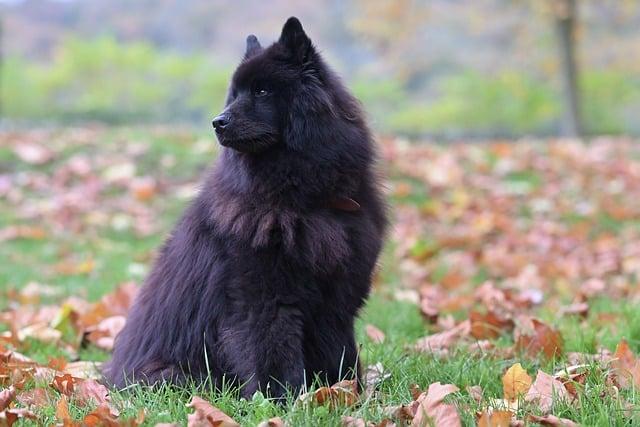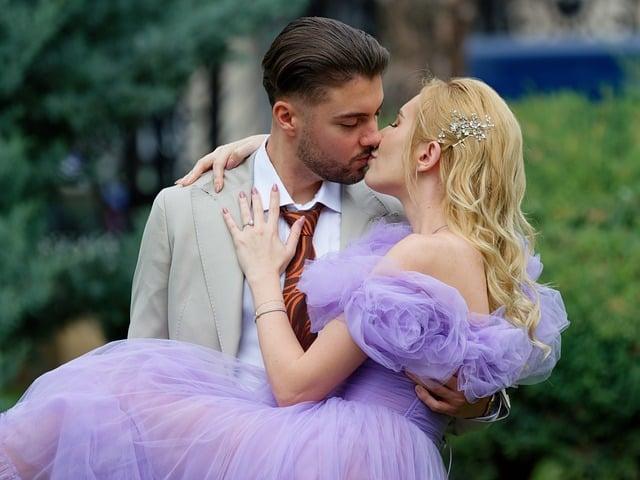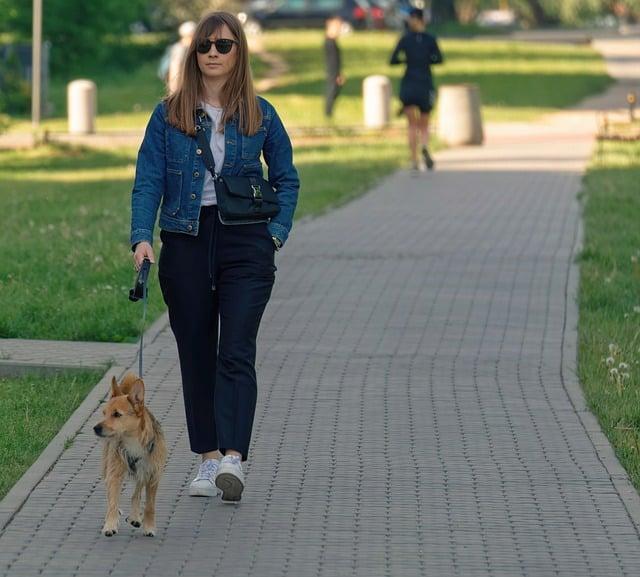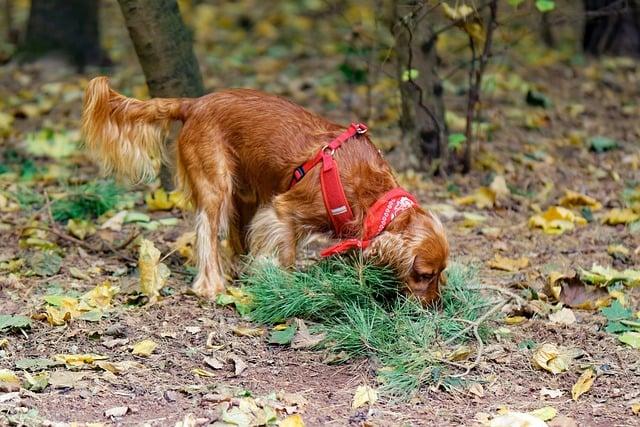Have you ever noticed your dog gently nudging you with his nose when you stop petting him? This adorable behavior isn’t just a plea for attention; it’s a heartfelt communication. Dogs thrive on affection and connection, and when you pause your petting, they may feel a sudden loss of comfort and security. By hitting you, they’re expressing their desire for closeness and reminding you of the bond you share. Understanding this can deepen your relationship, ensuring your furry friend feels loved and cherished. So, the next time your dog nudges you, remember: it’s their way of saying, “Don’t stop! I need you!”
Contents
- Understanding Canine Communication and Behavior
- The Psychological Impact of Attention on Dogs
- Effective Strategies to Manage Your Dogs Attention-Seeking Behavior
- Enhancing Your Bond Through Positive Reinforcement Techniques
- Q&A
Understanding Canine Communication and Behavior
Dogs are incredibly expressive creatures, and their behaviors often convey a wealth of information about their feelings and desires. When your furry friend nudges or “hits” you after you stop petting him, it’s essential to recognize this as a form of communication. This behavior can stem from a variety of motivations, including a desire for attention, affection, or even play. Understanding these signals can help strengthen the bond between you and your pet.
One common reason for this behavior is **attention-seeking**. Dogs thrive on interaction and may feel neglected when the petting stops. By nudging you, they are essentially saying, “Hey, I’m still here! Don’t forget about me!” This is particularly true for breeds that are known for their affectionate nature. If your dog is consistently seeking your touch, it’s a clear indication that they enjoy your company and want to maintain that connection.
Another possibility is that your dog is expressing **playfulness**. When they hit you, it could be an invitation to engage in a game or a playful interaction. Dogs often use their paws to initiate play, and this behavior can be a way of saying, “Let’s have some fun!” Recognizing this playful intent can lead to more enjoyable interactions and a happier, more stimulated dog.
The Psychological Impact of Attention on Dogs
Understanding the dynamics of attention between humans and dogs reveals a fascinating aspect of canine behavior. Dogs are inherently social animals, and their need for interaction is deeply rooted in their psychology. When you stop petting your dog, it can trigger a sense of confusion or even anxiety. This reaction is not merely a desire for physical contact; it reflects a deeper emotional connection that dogs form with their owners. They thrive on attention, and the sudden withdrawal of that attention can feel like a loss to them.
Moreover, dogs often communicate their feelings through physical actions. When your furry friend nudges or “hits” you after you cease petting, it’s their way of expressing a need for reassurance and connection. This behavior can be seen as a form of **attention-seeking**. Dogs have learned that certain actions elicit responses from their owners, and they may resort to these tactics when they feel neglected. This highlights the importance of understanding their communication methods and responding appropriately to their emotional needs.
Additionally, can lead to behavioral issues if not addressed. Dogs that frequently experience a lack of attention may develop anxiety, leading to destructive behaviors or excessive barking. By recognizing the significance of your dog’s need for interaction, you can foster a healthier relationship. Engaging in regular playtime, training sessions, and affectionate moments can help alleviate their anxiety and strengthen your bond.
it’s essential to consider the role of positive reinforcement in your dog’s behavior. When your dog receives attention and affection, they associate these moments with positive feelings. Conversely, withdrawing attention can create feelings of insecurity. By consistently providing love and attention, you can help your dog feel secure and valued, reducing the likelihood of attention-seeking behaviors. This not only enhances their emotional well-being but also enriches your relationship, leading to a happier and more balanced life together.
Effective Strategies to Manage Your Dogs Attention-Seeking Behavior
Understanding your dog’s attention-seeking behavior is crucial for fostering a harmonious relationship. When your furry friend nudges or hits you after you stop petting, it’s often a clear signal that they crave interaction. This behavior can stem from various motivations, including boredom, anxiety, or simply a desire for affection. Recognizing these underlying reasons is the first step in addressing the behavior effectively.
To manage this attention-seeking behavior, **consistency** is key. Establish a routine that includes dedicated playtime and affection sessions. By setting specific times for interaction, your dog will learn to anticipate and appreciate these moments, reducing the likelihood of demanding attention at inappropriate times. Additionally, ensure that your dog has access to engaging toys and activities that can keep them occupied when you need a break.
Another effective strategy is to **reinforce positive behavior**. Instead of responding to your dog’s nudging with immediate attention, wait for them to settle down or engage in a calm activity. When they do, reward them with praise or treats. This teaches your dog that calm behavior is more likely to earn them the affection they seek, rather than hitting or nudging you for attention.
Lastly, consider incorporating **training exercises** that promote independence. Teaching your dog commands such as “stay” or “go to your bed” can help them learn to enjoy their own space. Gradually increasing the duration of these exercises will help your dog become more comfortable being alone, reducing their need to seek constant attention. With patience and persistence, you can transform your dog’s attention-seeking behavior into a more balanced and fulfilling interaction.
Enhancing Your Bond Through Positive Reinforcement Techniques
Understanding your dog’s behavior is crucial in fostering a deeper connection. When your furry friend nudges or “hits” you after you stop petting him, it’s often a form of communication. Dogs thrive on attention and affection, and they quickly learn that certain behaviors can elicit a response from their humans. By recognizing this, you can turn these moments into opportunities for positive reinforcement, enhancing your bond.
To effectively address this behavior, consider implementing a few positive reinforcement techniques. Start by rewarding your dog when he displays calm behavior after you stop petting him. This could involve giving him a treat, verbal praise, or even a quick play session. By reinforcing the desired behavior, you teach him that being calm and patient leads to positive outcomes. Here are some strategies to consider:
- Timing is key: Immediately reward your dog when he remains calm after you stop petting.
- Use treats: Keep a stash of his favorite treats handy to reinforce good behavior.
- Incorporate commands: Teach him commands like “sit” or “stay” to redirect his energy when he becomes overly demanding.
Additionally, consistency is vital in reinforcing these techniques. Make sure everyone in your household is on the same page regarding how to respond to your dog’s nudging. If one person rewards the behavior while another discourages it, your dog may become confused. By maintaining a unified approach, you can help your dog understand what is expected of him, leading to a more harmonious relationship. Remember, the goal is to create an environment where your dog feels secure and understood, ultimately strengthening your bond.
Q&A
-
Why does my dog hit me when I stop petting him?
Your dog may be trying to communicate his desire for continued attention. Dogs often use their paws to express themselves, and a gentle tap can be his way of saying, “Please keep petting me!”
-
Is this behavior a sign of affection?
Absolutely! When your dog paws at you, it can be a sign of affection and a desire for closeness. Dogs thrive on social interaction, and your touch is comforting to them.
-
Should I encourage this behavior?
While it’s natural for dogs to seek attention, it’s essential to set boundaries. You can encourage gentle pawing by rewarding your dog when he uses his paws appropriately, but also teach him that there are times when he needs to wait for your attention.
-
How can I respond to this behavior?
Respond positively by resuming petting when he taps you, but also incorporate commands like “sit” or “wait” to teach him patience. This way, you reinforce good behavior while still giving him the affection he craves.
understanding your dog’s behavior is key to fostering a deeper bond. When your furry friend nudges you for more affection, it’s a sign of love and a desire for connection. Embrace these moments to strengthen your relationship and enhance their happiness.

大家好,我是彼得潘,專業的手法身體治療師。我喜歡探索和研究各種主題,並透過與人工智慧的合作分享專業、實用、有趣的文章。我們定期進行人工審核,以確保內容的準確性。如果您發現文章中有任何不準確的地方,請隨時與我們聯繫,我們會及時糾正。您可以透過 [email protected] 與我們聯繫。



